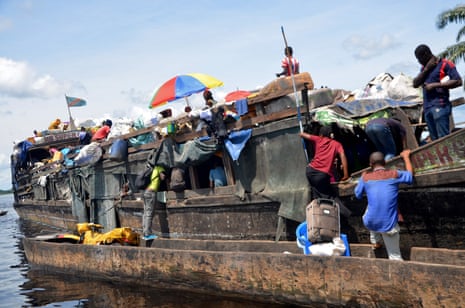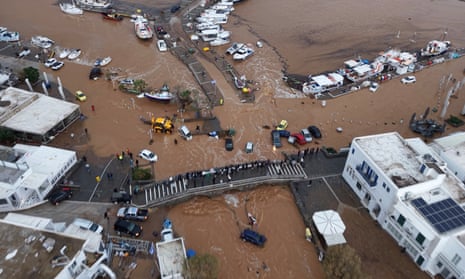🌊 Grim Reality Unveiled: Congo River Tragedy Claims 148 Lives 🌊 The once vibrant waters of the Congo River now carry a chilling silence, a stark reminder of the devastating boat disaster that has ripped through a community. As the death toll tragically rises to 148, the agonizing search for over 100 missing individuals continues, casting a shadow of despair over the region. This isn’t just a statistic; it’s a human tragedy unfolding, leaving families shattered and communities reeling. We dive deep into the heart of this catastrophe, exploring the factors that led to this heartbreaking event and the ongoing efforts to recover the missing and provide solace to the bereaved.
The Route: A Perilous Journey on the Congo River

The Congo River, the second longest in Africa, is a vital lifeline for the Democratic Republic of Congo (DRC), serving as a primary transportation route for its vast population. However, this journey from Matankumu to Bolomba, a common route for both passengers and goods, is fraught with danger.
The river’s unpredictable currents, coupled with dense vegetation and shallow waters, create a treacherous environment for navigation. Droughts and floods further exacerbate these challenges, making the journey even more perilous. The recent tragedy highlights the urgent need for improved safety measures along the Congo River.

Systemic Failure: The Roots of Recurrent Tragedy
Enforcing Regulations: A Constant Struggle
The DRC faces significant challenges in enforcing maritime safety regulations. Weak governance structures, limited resources, and widespread corruption hinder the effective implementation and enforcement of safety protocols.
Inspections of vessels are often cursory, and penalties for violations are rarely enforced, leading to a culture of complacency and disregard for safety standards. This lack of oversight allows overcrowded and poorly maintained boats to operate, increasing the risk of accidents.

Overcrowding and Late-Night Travel: A Deadly Combination
Overcrowding is a persistent problem on Congolese waterways. Passengers often cram onto vessels far beyond their capacity, increasing the risk of capsizing and making evacuation during emergencies nearly impossible.
Late-night travel adds another layer of danger. Reduced visibility and limited communication capabilities during these hours increase the likelihood of collisions and make rescue operations more challenging.
Inadequate Infrastructure: A Reliance on Rivers
The DRC’s underdeveloped road network forces many communities to rely heavily on rivers for transportation. This dependence creates a constant demand for water transport, often leading to the use of makeshift and unreliable vessels.
The lack of investment in alternative transportation infrastructure exacerbates the problem, leaving communities vulnerable to the risks posed by unsafe waterways.
A Call for Action: Preventing Future Disasters
Immediate Relief Efforts: Addressing the Immediate Needs
The immediate priority is to provide urgent relief to survivors and the families of the victims. This includes access to medical care for those injured, shelter for displaced individuals, and psychosocial support for those who have experienced trauma.
The international community must step up to assist the DRC in providing this essential aid.
Long-Term Solutions: Building a Safer Future
Addressing the root causes of these recurring tragedies requires a comprehensive approach that focuses on long-term solutions.
- Stricter Regulation and Enforcement: Implementing and rigorously enforcing maritime safety regulations is crucial. This includes mandatory vessel inspections, capacity limits, and penalties for violations.
- Improved Infrastructure: Investing in alternative transportation infrastructure, such as roads and railways, can reduce reliance on waterways and alleviate pressure on the existing system.
- Public Awareness Campaigns: Raising awareness about maritime safety practices and the dangers of overloading and late-night travel is essential for changing behavior patterns.
- Training and Capacity Building: Providing training and support to local authorities, boat operators, and passengers can enhance safety knowledge and promote responsible practices.
- Strengthening maritime regulations and enforcement mechanisms.
- Investing in infrastructure development to reduce reliance on waterways.
- Building capacity within the DRC to manage and respond to maritime emergencies.
The Role of the International Community: Providing Support and Expertise
The DRC cannot address this crisis alone. The international community can play a vital role by providing financial and technical assistance to support:
Conclusion
The tragic boat disaster on Lake Tumba in the Democratic Republic of Congo carries a chilling reminder of the fragility of life and the desperate need for improved safety standards. With the death toll mounting and over 100 people still missing, the scale of the tragedy is staggering. The overcrowding of the vessel, inadequate safety equipment, and stormy weather conditions all contributed to this preventable catastrophe, highlighting the systemic challenges facing transportation in the region. This disaster is not just a statistic; it’s a human tragedy that has ripped families apart and left communities reeling. It underscores the vulnerability of those who rely on these often unreliable modes of transportation to meet their basic needs. Moving forward, it’s imperative that authorities prioritize the implementation of stricter regulations, invest in safer vessels, and ensure the enforcement of safety protocols on all waterways. The voices of the bereaved and the missing must be heard, demanding action and accountability. This tragedy must serve as a catalyst for change, ensuring that future journeys on Congo’s waterways are not marked by sorrow but by safety and hope.
